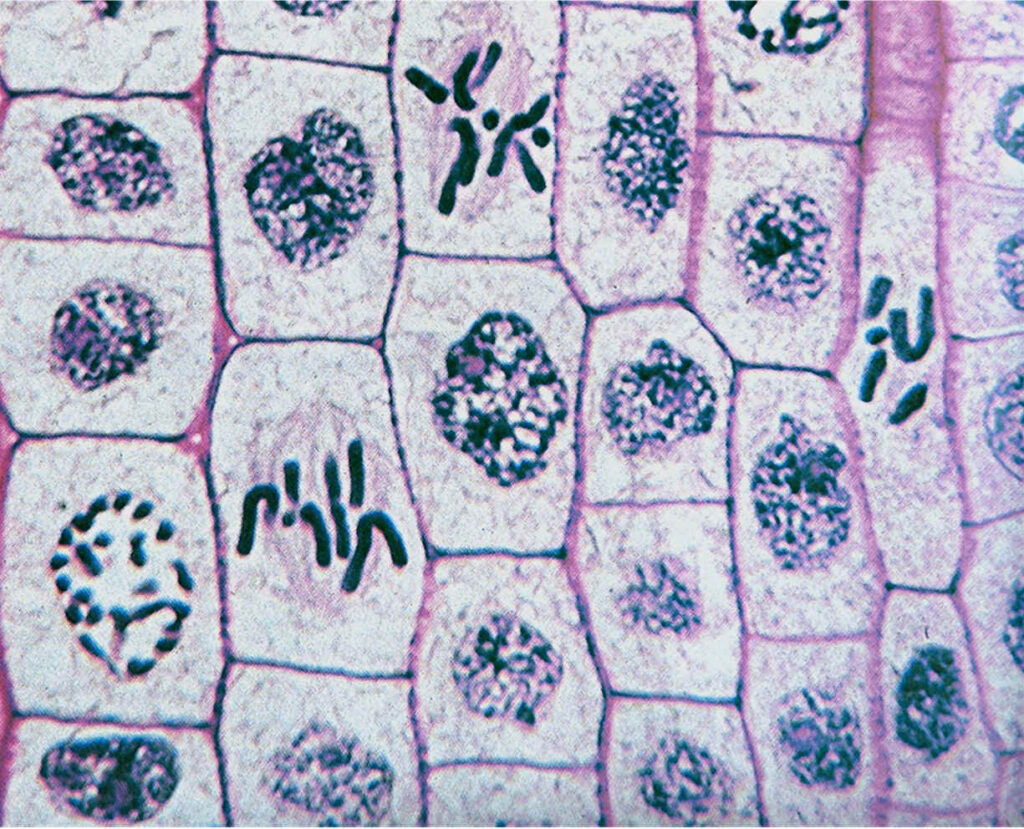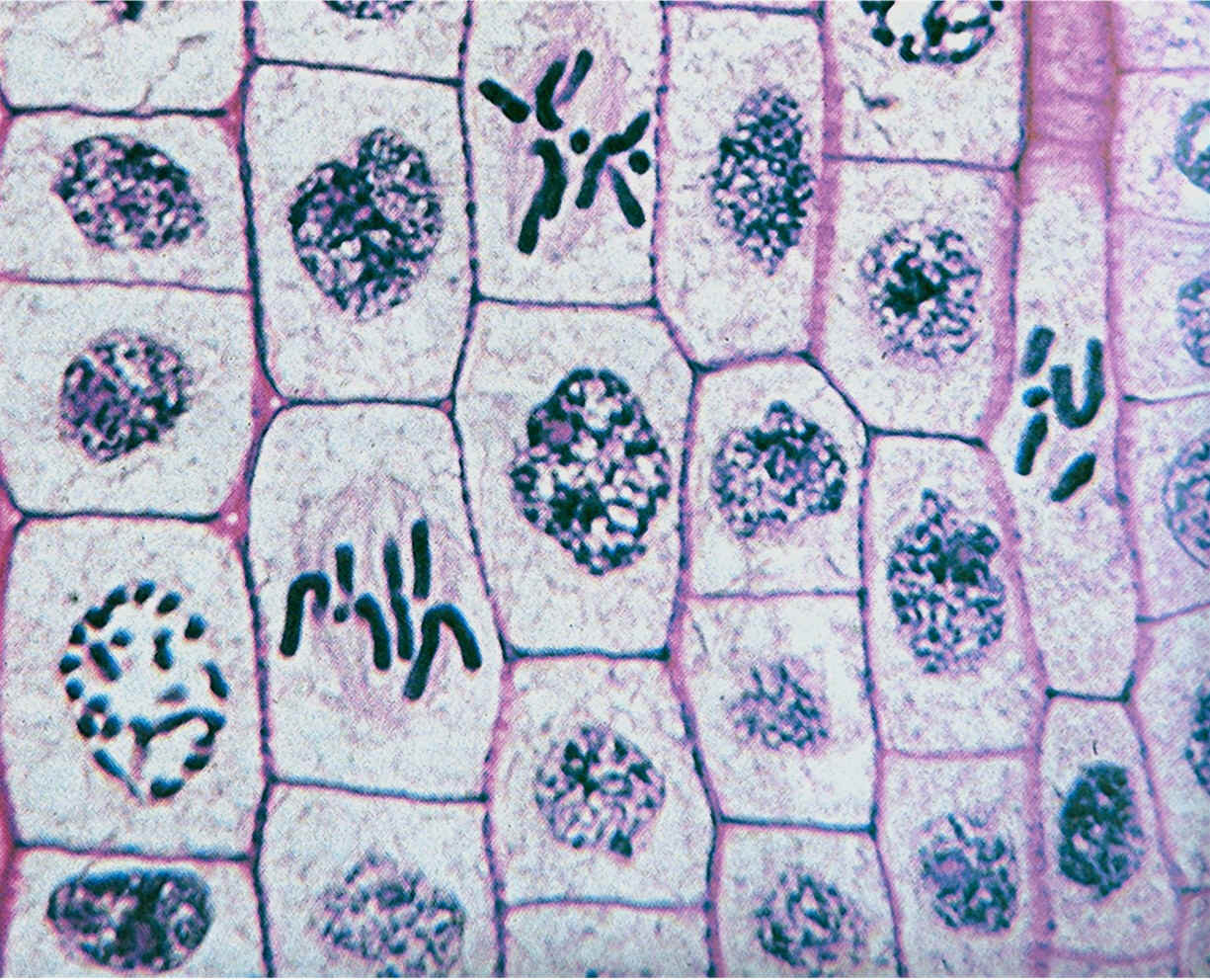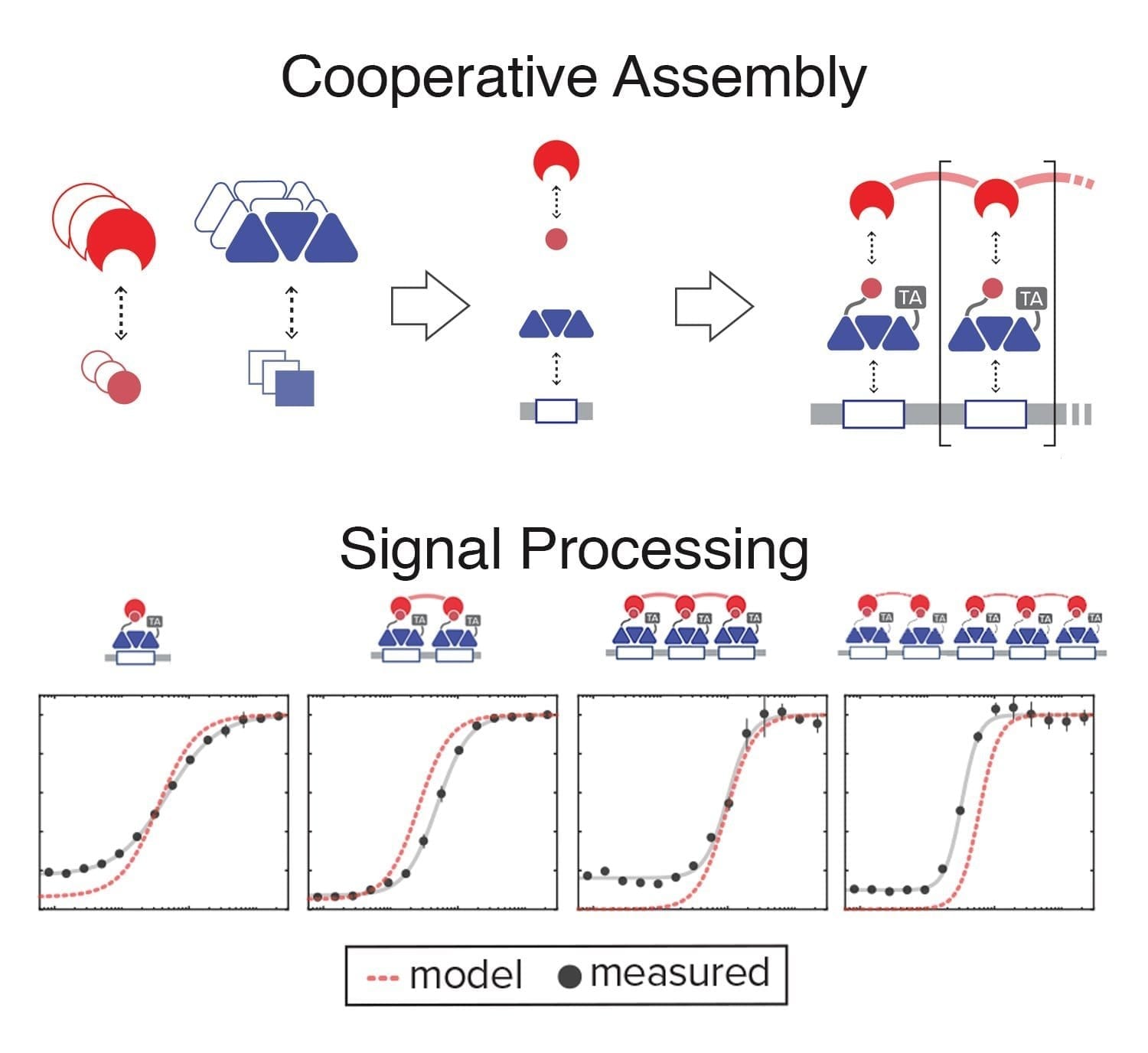
Technique combines analogue and digital processes in engineered cells.
Living cells are capable of performing complex computations on the environmental signals they encounter.
These computations can be continuous, or analogue, in nature — the way eyes adjust to gradual changes in the light levels. They can also be digital, involving simple on or off processes, such as a cell’s initiation of its own death.
Synthetic biological systems, in contrast, have tended to focus on either analogue or digital processing, limiting the range of applications for which they can be used.
But now a team of researchers at MIT has developed a technique to integrate both analogue and digital computation in living cells, allowing them to form gene circuits capable of carrying out complex processing operations.
The synthetic circuits, presented in a paper published today in the journal Nature Communications, are capable of measuring the level of an analogue input, such as a particular chemical relevant to a disease, and deciding whether the level is in the right range to turn on an output, such as a drug that treats the disease.
In this way they act like electronic devices known as comparators, which take analogue input signals and convert them into a digital output, according to Timothy Lu, an associate professor of electrical engineering and computer science and of biological engineering, and head of the Synthetic Biology Group at MIT’s Research Laboratory of Electronics, who led the research alongside former microbiology PhD student Jacob Rubens.
“Most of the work in synthetic biology has focused on the digital approach, because [digital systems] are much easier to program,” Lu says.
However, since digital systems are based on a simple binary output such as 0 or 1, performing complex computational operations requires the use of a large number of parts, which is difficult to achieve in synthetic biological systems.
“Digital is basically a way of computing in which you get intelligence out of very simple parts, because each part only does a very simple thing, but when you put them all together you get something that is very smart,” Lu says. “But that requires you to be able to put many of these parts together, and the challenge in biology, at least currently, is that you can’t assemble billions of transistors like you can on a piece of silicon,” he says.
The mixed signal device the researchers have developed is based on multiple elements. A threshold module consists of a sensor that detects analogue levels of a particular chemical.
This threshold module controls the expression of the second component, a recombinase gene, which can in turn switch on or off a segment of DNA by inverting it, thereby converting it into a digital output.
If the concentration of the chemical reaches a certain level, the threshold module expresses the recombinase gene, causing it to flip the DNA segment. This DNA segment itself contains a gene or gene-regulatory element that then alters the expression of a desired output.
“So this is how we take an analogue input, such as a concentration of a chemical, and convert it into a 0 or 1 signal,” Lu says. “And once that is done, and you have a piece of DNA that can be flipped upside down, then you can put together any of those pieces of DNA to perform digital computing,” he says.
The team has already built an analogue-to-digital converter circuit that implements ternary logic, a device that will only switch on in response to either a high or low concentration range of an input, and which is capable of producing two different outputs.
In the future, the circuit could be used to detect glucose levels in the blood and respond in one of three ways depending on the concentration, he says.
“If the glucose level was too high you might want your cells to produce insulin, if the glucose was too low you might want them to make glucagon, and if it was in the middle you wouldn’t want them to do anything,” he says.
Similar analogue-to-digital converter circuits could also be used to detect a variety of chemicals, simply by changing the sensor, Lu says.
The researchers are investigating the idea of using analogue-to-digital converters to detect levels of inflammation in the gut caused by inflammatory bowel disease, for example, and releasing different amounts of a drug in response.
Immune cells used in cancer treatment could also be engineered to detect different environmental inputs, such as oxygen or tumor lysis levels, and vary their therapeutic activity in response.
Other research groups are also interested in using the devices for environmental applications, such as engineering cells that detect concentrations of water pollutants, Lu says.
Ahmad Khalil, an assistant professor of biomedical engineering at Boston University, who was not involved in the work, says the researchers have expanded the repertoire of computation in cells.
“Developing these foundational tools and computational primitives is important as researchers try to build additional layers of sophistication for precisely controlling how cells interact with their environment,” Khalil says.
The research team recently created a spinout company, called Synlogic, which is now attempting to use simple versions of the circuits to engineer probiotic bacteria that can treat diseases in the gut.
The company hopes to begin clinical trials of these bacteria-based treatments within the next 12 months.
Learn more: Gene circuits in live cells can perform complex computations
The Latest on: Computation in cells
[google_news title=”” keyword=”Computation in cells” num_posts=”10″ blurb_length=”0″ show_thumb=”left”]
via Google News
The Latest on: Computation in cells
- 7 Ways to Speed Up Your Excel Spreadsheetson May 8, 2024 at 7:00 am
Busy Excel spreadsheets can—frustratingly—grind to a halt, especially as you use the many functions and formatting options. The last thing you want is your worksheet to pause while executing a simple ...
- Quantum Tunneling Explained With 40-Year-Old Mathematical Discoveryon May 1, 2024 at 11:43 pm
Researchers have successfully used 40-year-old mathematics to explain quantum tunneling, providing a unified approach to diverse quantum phenomena. Quantum mechanical effects such as radioactive decay ...
- This tiny chip can safeguard user data while enabling efficient computing on a smartphoneon April 23, 2024 at 3:56 pm
A new chip can efficiently accelerate machine-learning workloads on edge devices like smartphones while protecting sensitive user data from two common types of attacks -- side-channel attacks and ...
- Preparing for the DNA computation paradigm shifton April 17, 2024 at 3:04 am
And it is this architecture, this computing paradigm, that is increasingly becoming incompatible with the ever-increasing demand for data storage and computation. Our cells are DNA-based computers ...
- AI and Economic Calculationon April 16, 2024 at 8:38 am
The workshop’s broad frame was exploring how AI may change the boundaries between markets and the state, and its springboard was the socialist calculation debate. The question hinges on the ...
- For Turing Award winner, everything is computation and some problems are unsolvableon April 10, 2024 at 2:25 pm
Computational examples abound. Computation is how the fertilized egg gets to be a human being, or how human cells divide throughout one's lifetime. "Also, gossip," added Wigderson. "When you tell ...
- Using Jupyteron July 20, 2023 at 12:18 pm
There are two fairly prominent terms that you should notice, which are probably new to you: cells and kernels are both key to understanding Jupyter and what makes it more than just a word processor.
- How to hide Formula in Excelon July 19, 2022 at 2:30 pm
All the formulas and the calculation work can be hidden from the ... To do this, select the cells whose formulas you want to hide. Next, move to ‘Home’ tab. Look for the Cells section to ...
- Bitcoin And The Thermodynamics Of Computationon June 26, 2022 at 7:03 pm
If that doesn’t sound like Bitcoin, I don’t know what does… The agenda also states: “The thermodynamics of computation is a long-standing ... using less energy per cell added as they grow. (See: ...
- How to Use the Round Up Calculation in Excelon March 5, 2022 at 7:42 am
Type the number you want to round up in the first space inside of the parentheses, or select the cell containing the number you want to calculate. Enter a comma immediately following the number or ...
via Bing News











